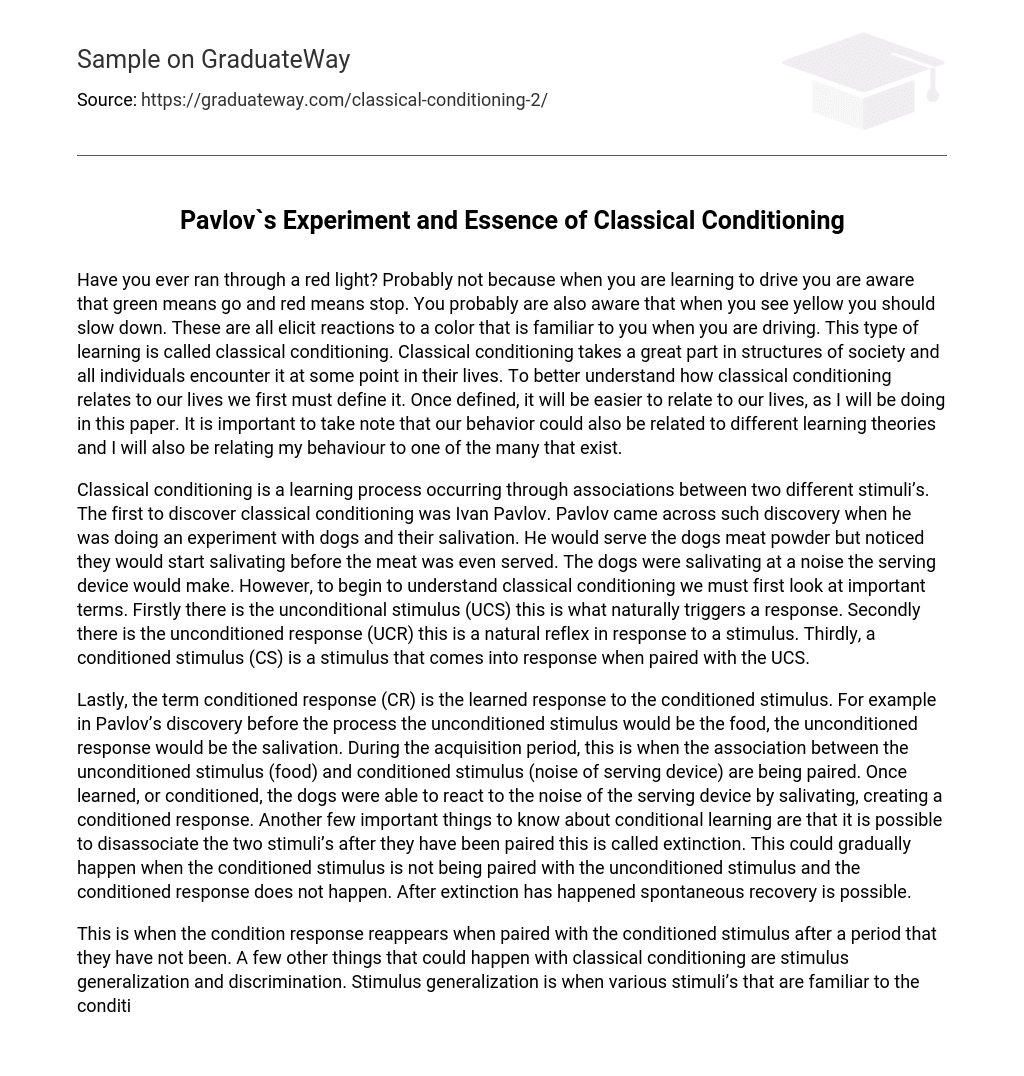Learning to drive introduces us to the colors of traffic lights: green, red, and yellow. Green signals us to go, red prompts us to stop, and yellow advises us to slow down. These color associations exemplify classical conditioning, a phenomenon experienced by everyone at some point in life that holds significant importance in society. To comprehend how classical conditioning impacts our lives, we must first define it and establish a connection with our own experiences. Moreover, it is crucial to acknowledge that our behavior can be influenced by different learning theories; I will explore one such theory in relation to my own behavior.
Ivan Pavlov discovered classical conditioning while conducting an experiment with dogs and their salivation. This learning process occurs when two different stimuli are associated with each other. Pavlov noticed that the dogs would begin salivating at the sound of a serving device, even before receiving any meat. To fully grasp classical conditioning, it is crucial to understand certain terms: the unconditional stimulus (UCS), which naturally triggers a response; the unconditioned response (UCR), which is a natural reflex to a stimulus; and finally, the conditioned stimulus (CS), which elicits a response when paired with the UCS.
Finally, the conditioned response (CR) is the learned response to the conditioned stimulus. In Pavlov’s experiment, food served as the unconditioned stimulus and salivation acted as the unconditioned response. During acquisition, food and the noise of the serving device were paired as unconditioned and conditioned stimuli respectively. Once conditioned, dogs could elicit salivation solely from hearing the noise of the serving device, resulting in a CR.
Extinction is another crucial aspect of conditional learning where dissociation between stimuli occurs following pairing. This occurs when the conditioned stimulus no longer associates with the unconditioned stimulus, leading to an absence of CR. However, even after extinction takes place, spontaneous recovery may still occur.
This is the reappearance of the conditioned response when paired with the conditioned stimulus after a period of absence. Other phenomena that can occur in classical conditioning include stimulus generalization and discrimination. Stimulus generalization involves familiar stimuli that evoke the conditioned response along with the conditioned stimulus. For instance, in Pavlov’s experiment, if the dogs salivated to similar tones as the noise from the serving dish, it would be considered stimulus generalization. Discrimination refers to an individual’s ability to differentiate between the conditioned stimulus and other similar stimuli. Using Pavlov’s experiment again, if the dogs could distinguish between the noise from the serving dish and other similar tones, it would be discrimination.
Higher order conditioning is an extension of classical conditioning. It involves using the conditioned stimulus as an unconditioned stimulus to elicit a conditioned response to another stimulus. For instance, Pavlov paired the noise made by the serving dish with a black mat. Over time, the dogs started salivating when they saw the black mat. Classical conditioning can be observed in different aspects of life and may sometimes be easy or difficult to identify. However, after learning about it and gaining a better understanding, I was able to effectively apply classical conditioning.





